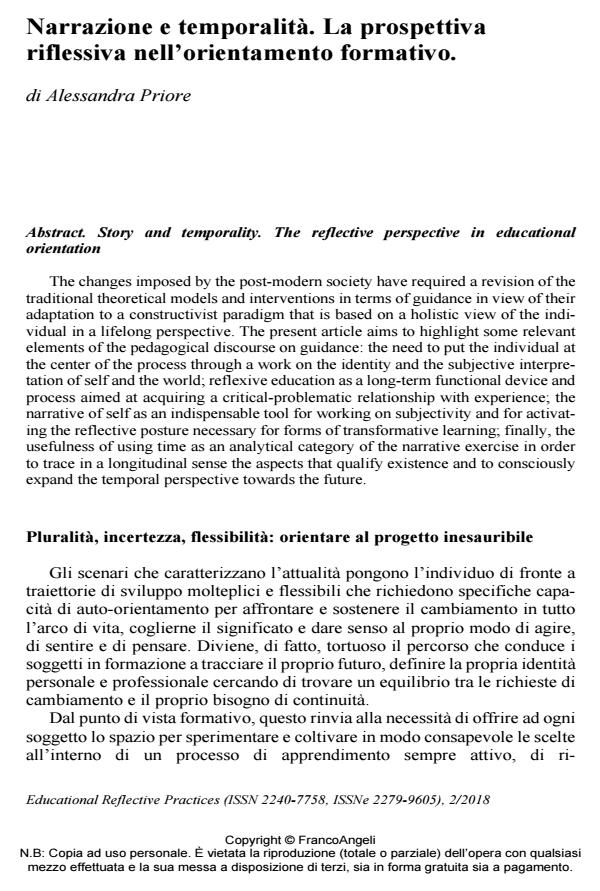Story and temporality. The reflective perspective in educational orientation
Journal title EDUCATIONAL REFLECTIVE PRACTICES
Author/s Alessandra Priore
Publishing Year 2019 Issue 2018/2
Language Italian Pages 10 P. 234-243 File size 154 KB
DOI 10.3280/ERP2018-002015
DOI is like a bar code for intellectual property: to have more infomation
click here
Below, you can see the article first page
If you want to buy this article in PDF format, you can do it, following the instructions to buy download credits

FrancoAngeli is member of Publishers International Linking Association, Inc (PILA), a not-for-profit association which run the CrossRef service enabling links to and from online scholarly content.
The changes imposed by the post-modern society have required a revision of the traditional theoretical models and interventions in terms of guidance in view of their adaptation to a constructivist paradigm that is based on a holistic view of the individual in a lifelong perspective. The present article aims to highlight some rel-evant elements of the pedagogical discourse on guidance: the need to put the indi-vidual at the center of the process through a work on the identity and the subjective interpretation of self and the world; reflexive education as a long-term functional device and process aimed at acquiring a critical-problematic relationship with experience; the narrative of self as an indispensable tool for working on subjectivity and for activating the reflective posture necessary for forms of transformative learning; finally, the usefulness of using time as an analytical category of the narrative exercise in order to trace in a longitudinal sense the aspects that qualify existence and to consciously expand the temporal perspective towards the future.
Alessandra Priore, Narrazione e temporalità. La prospettiva riflessiva nell’orientamento formativo. in "EDUCATIONAL REFLECTIVE PRACTICES" 2/2018, pp 234-243, DOI: 10.3280/ERP2018-002015